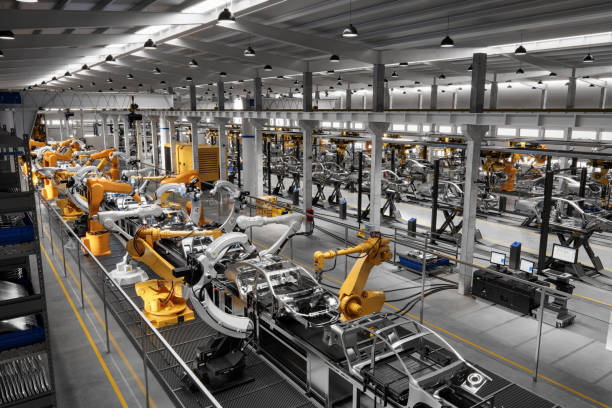Manufacturing environments and high-volume production facilities face unique challenges when it comes to printing requirements, demanding equipment that can maintain consistent output quality while operating continuously under demanding conditions. An industrial large format printer addresses these challenges through robust mechanical design, advanced automation capabilities, and production-oriented features that maximize throughput while minimizing operator intervention and maintenance requirements.
Continuous Operation Design Philosophy
Industrial large format printing systems incorporate design elements specifically engineered for extended operation cycles that may span multiple shifts without interruption. These systems feature heavy-duty mechanical components including reinforced frame construction, industrial-grade linear actuators, and bearing systems rated for millions of operation cycles. The mechanical systems are designed with redundancy in critical areas, ensuring that component failures don’t result in complete system shutdowns.
Thermal management becomes crucial in continuous operation environments, where heat buildup from print heads, electronics, and mechanical systems can affect print quality and component longevity. Industrial systems incorporate sophisticated cooling systems that maintain stable operating temperatures even during extended high-speed printing sessions. Advanced models include predictive temperature monitoring that adjusts print parameters automatically to compensate for thermal variations throughout long production runs.
Automated Material Handling and Workflow
High-volume printing operations require minimal human intervention to maintain productivity targets. Industrial large format printers incorporate automated material loading systems that can handle multiple roll types and automatically switch between materials based on job requirements. These systems include automatic splice detection and changeover capabilities that eliminate production interruptions when roll changes are required.
Advanced models feature integrated cutting and finishing systems that complete jobs without operator intervention. Automated workflow systems coordinate printing, cutting, and material handling operations through centralized control systems that optimize production scheduling and material usage. Some installations include robotic material handling systems that transport finished products to packaging or shipping areas, further reducing labor requirements and improving overall efficiency.
Ink Delivery and Management Systems
Industrial printing environments demand ink delivery systems that can support high-volume consumption while maintaining consistent print quality. Bulk ink delivery systems replace traditional cartridge-based supplies with large-capacity reservoirs that reduce supply costs and eliminate frequent changeover requirements. These systems typically incorporate automatic ink level monitoring and alert systems that provide advance warning of supply requirements.
Advanced ink management systems include circulation and conditioning capabilities that maintain ink viscosity and prevent settling during extended storage periods. Temperature-controlled ink delivery ensures consistent droplet formation regardless of ambient conditions, while filtration systems remove contaminants that could affect print quality or damage print heads. Some systems include ink recovery and recycling capabilities that capture overspray and unused ink for reprocessing, reducing material waste and operating costs.
Quality Control and Monitoring Integration
Maintaining consistent output quality in high-volume environments requires sophisticated monitoring and control systems that can detect and correct variations before they affect finished products. Industrial large format printers incorporate inline quality monitoring systems that continuously assess print density, color accuracy, and registration throughout production runs.
Real-time monitoring systems include spectrophotometer integration that measures color accuracy and automatically adjusts ink delivery to maintain consistency. Print head performance monitoring tracks individual nozzle function and can compensate for degraded performance or automatically initiate cleaning cycles when required. Advanced systems include predictive maintenance capabilities that analyze system performance data to schedule maintenance activities during planned downtime periods.
Production Scheduling and Resource Optimization
Industrial printing operations benefit from sophisticated production management systems that optimize job scheduling, material usage, and equipment utilization. These systems analyze job requirements, material availability, and equipment capabilities to create optimized production schedules that maximize throughput while minimizing setup times and material waste.
Automatic nesting and layout optimization software reduces material consumption by efficiently arranging multiple jobs on single substrate sheets. Dynamic scheduling systems can adjust production sequences based on material availability, deadline requirements, and equipment status. Integration with enterprise resource planning systems enables seamless coordination between printing operations and broader manufacturing or fulfillment processes.
Maintenance and Serviceability Features
High-volume industrial environments require equipment that can be maintained efficiently without extended downtime periods. Industrial large format printers incorporate modular designs that enable component replacement and maintenance activities to be performed quickly and safely. Automatic lubrication systems reduce manual maintenance requirements while ensuring that mechanical components receive proper care throughout their service life.
Diagnostic systems provide detailed performance analysis and troubleshooting capabilities that enable rapid identification and resolution of operational issues. Remote monitoring capabilities allow service technicians to assess system status and performance remotely, often enabling issues to be resolved without on-site visits. Predictive maintenance systems analyze operating data to identify potential problems before they result in equipment failures or quality issues.
Environmental and Safety Considerations
Industrial printing operations must address environmental and safety requirements that may not apply to smaller-scale operations. Advanced ventilation and air handling systems manage ink vapors and maintain air quality within acceptable limits. Some systems incorporate ink vapor recovery and treatment systems that eliminate environmental emissions while reducing operating costs.


